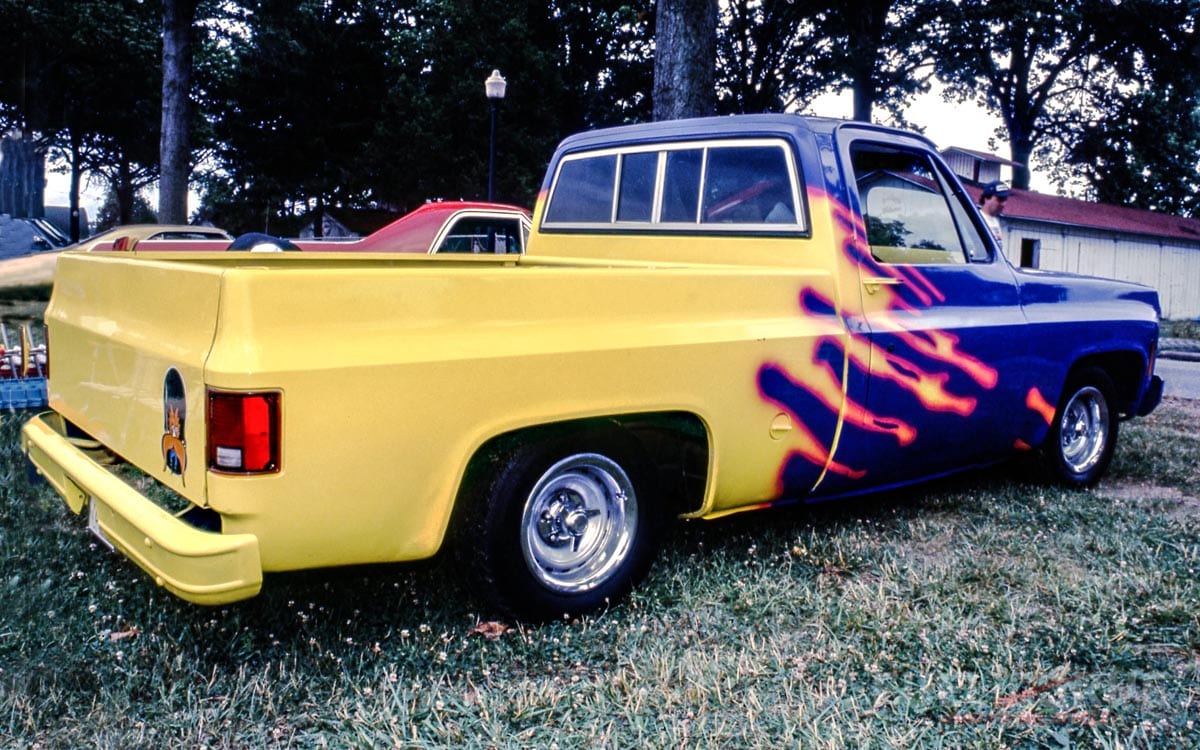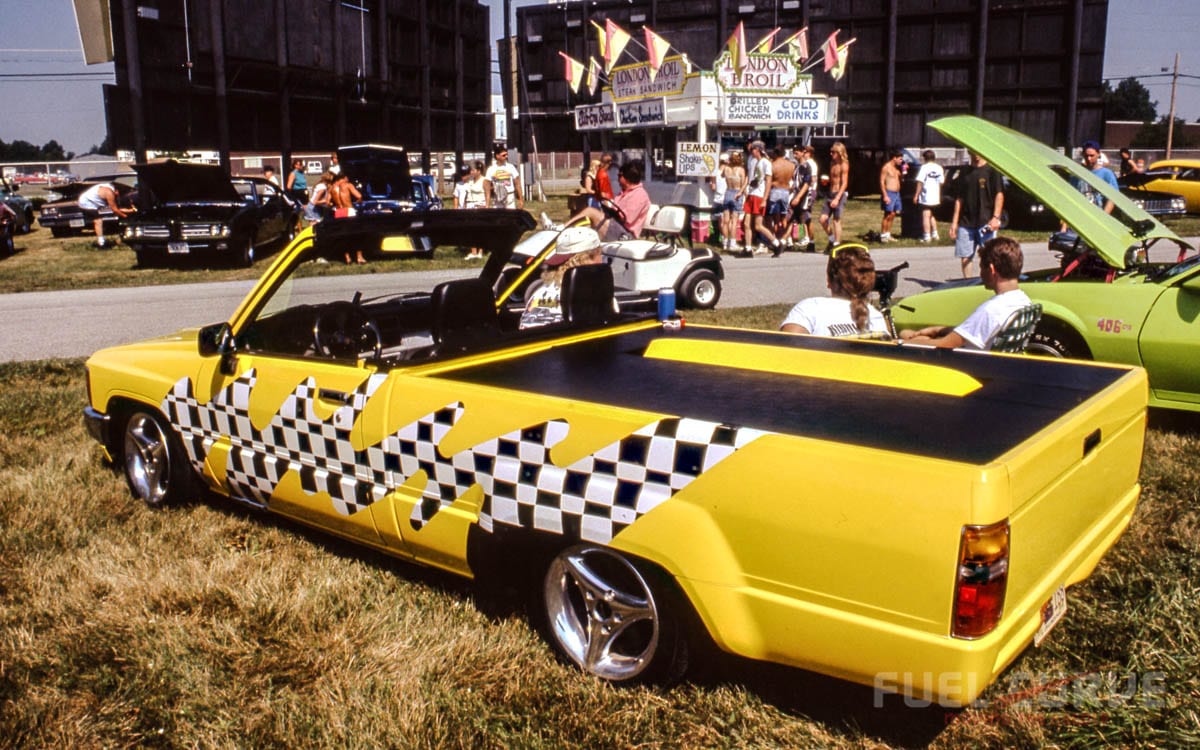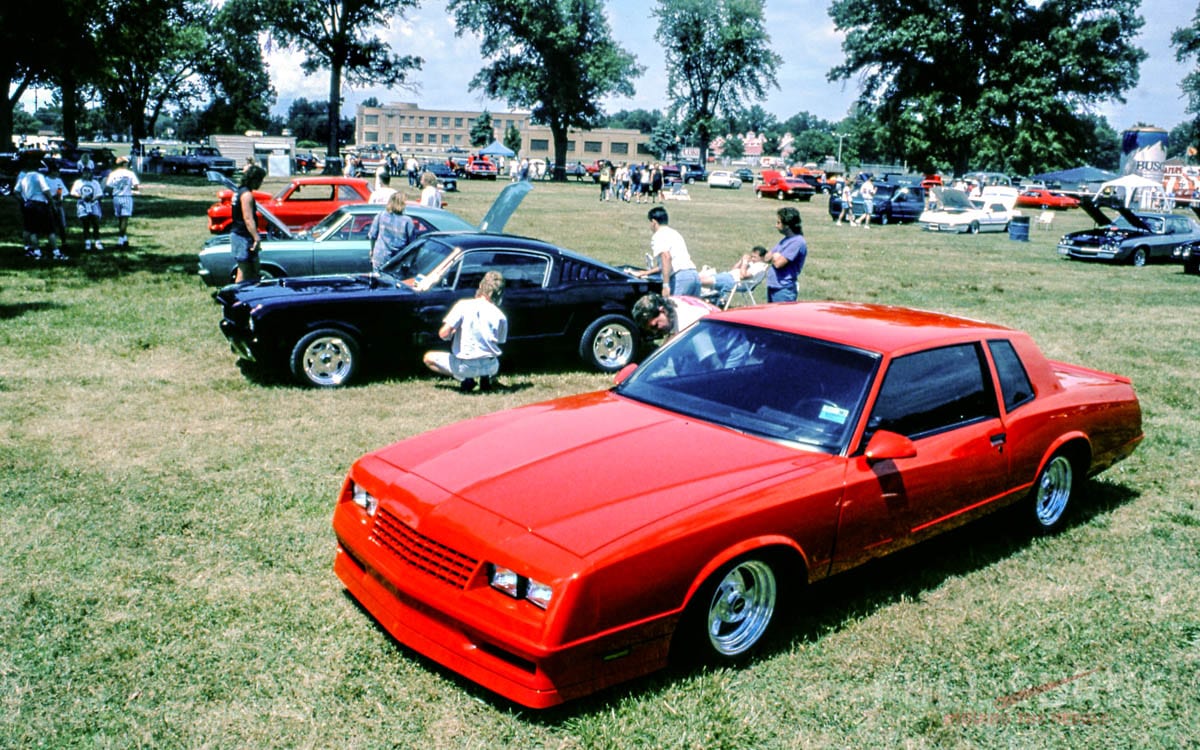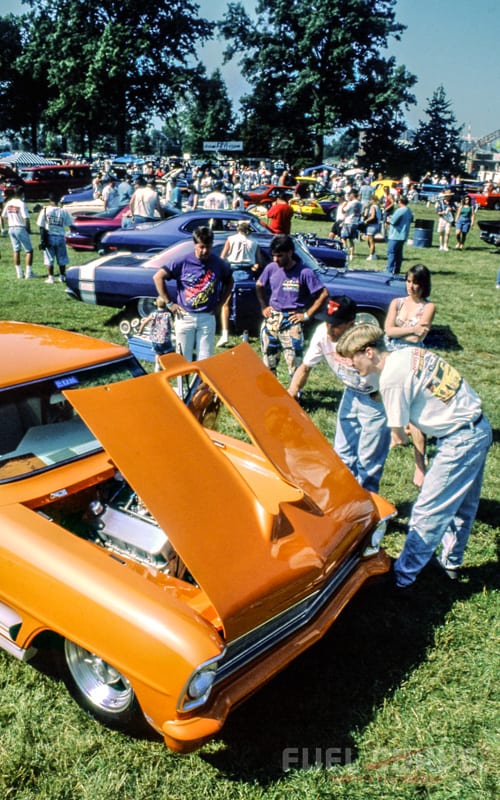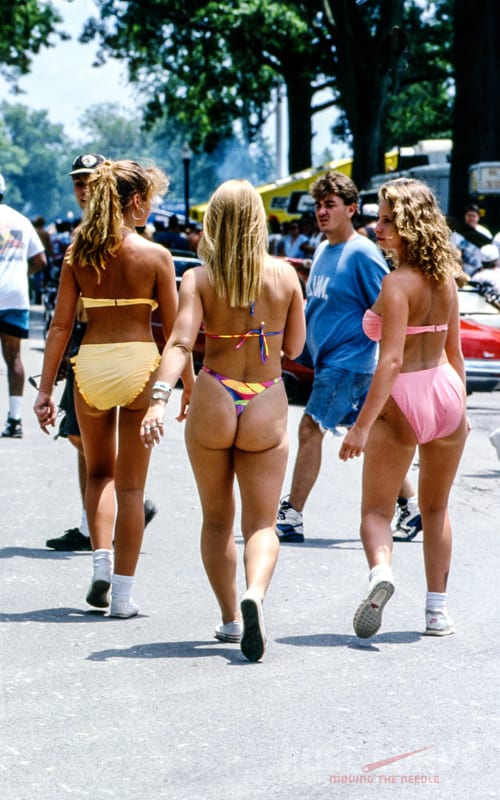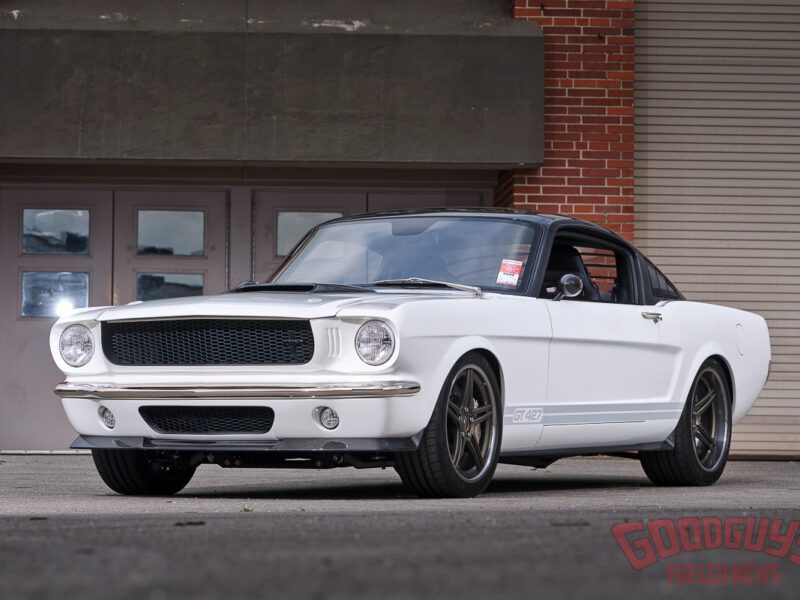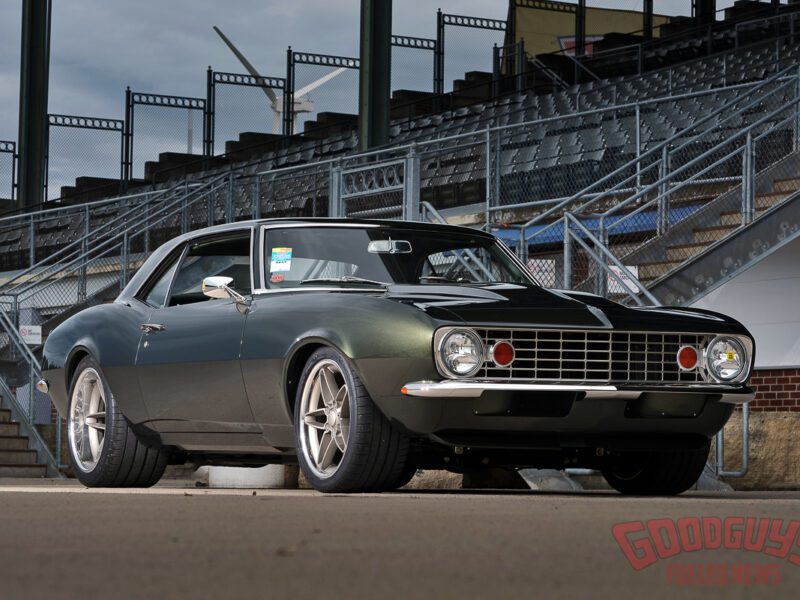Time Capsule, 1994 Street Machine Nationals
The 1994 Street Machine Nationals was held in a small country town in south central Illinois, named Du Quoin. It’s about as far from any big center of population as you can get. In fact, getting there is a trip unto itself.
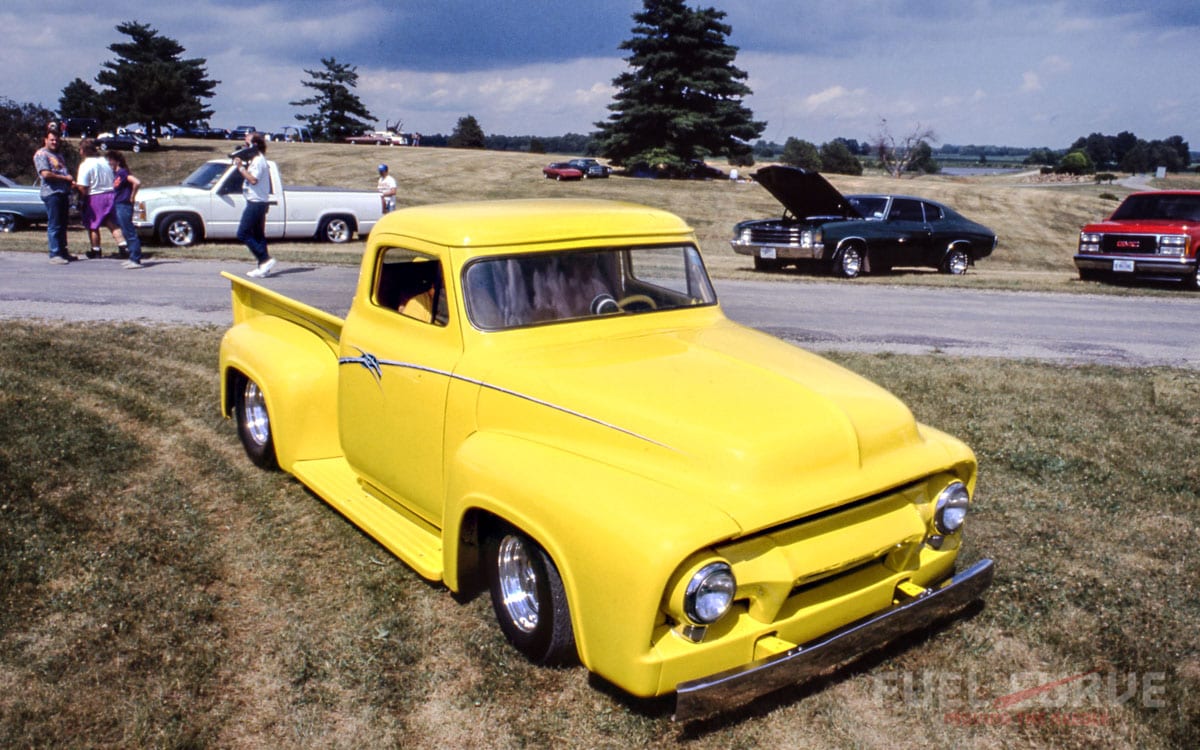 Looking back on my 1994 visit to the Street Machine Nationals for this Fuel Curve Time Capsule story (you might remember the 1991 SMN story we did a few months back), I remember flying in from the West Coast through the St. Louis airport taking the back roads of southern Illinois heading to Du Quoin. The trip from St. Louis takes about three hours and passes through a dozen small towns where little seems to have changed. Farmers in overalls hung about outside feed stores, sitting on the hoods of their Chevy’s, and the local car dealers were overflowing with new trucks and full-sized American-built sedans.
Looking back on my 1994 visit to the Street Machine Nationals for this Fuel Curve Time Capsule story (you might remember the 1991 SMN story we did a few months back), I remember flying in from the West Coast through the St. Louis airport taking the back roads of southern Illinois heading to Du Quoin. The trip from St. Louis takes about three hours and passes through a dozen small towns where little seems to have changed. Farmers in overalls hung about outside feed stores, sitting on the hoods of their Chevy’s, and the local car dealers were overflowing with new trucks and full-sized American-built sedans.
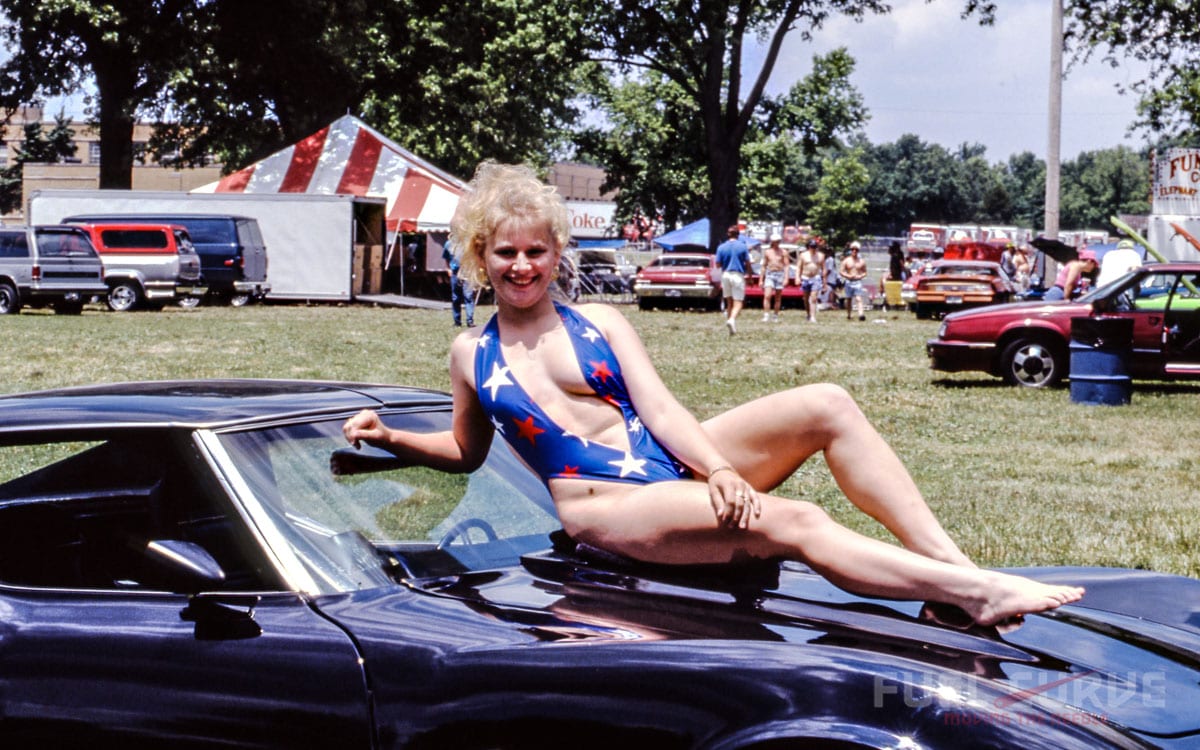
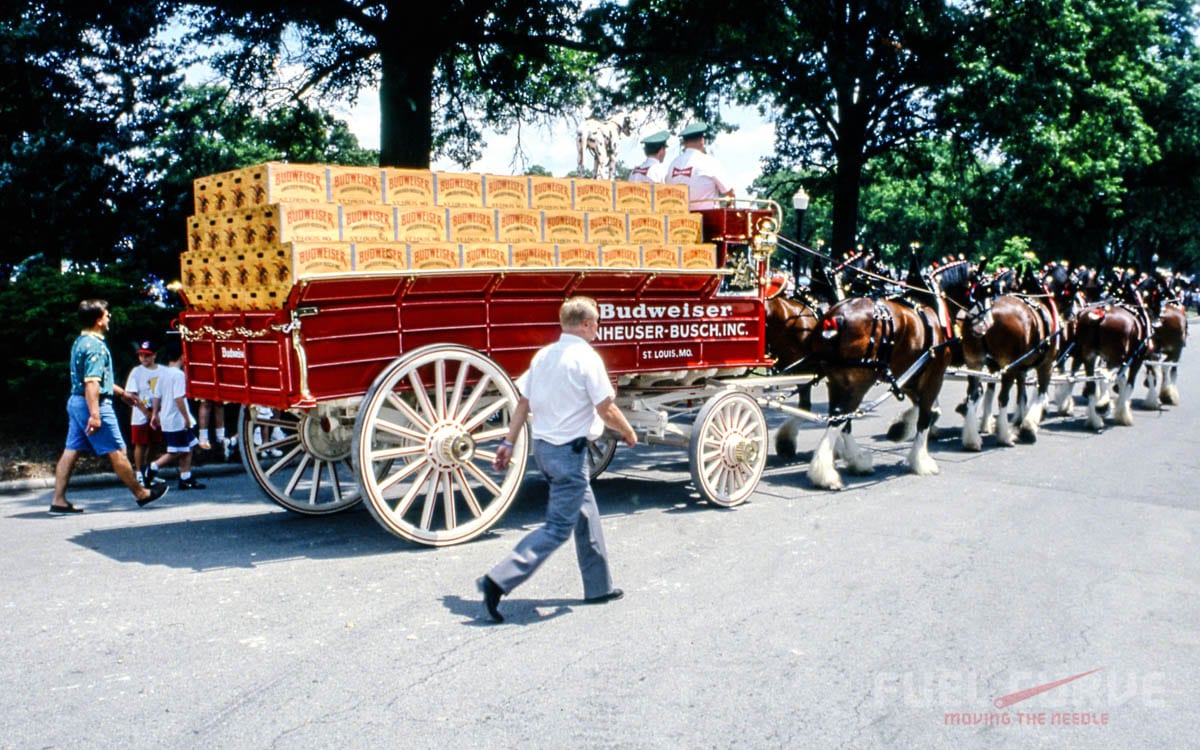 Du Quoin is a town like any of these. Four or five blinks and it’s gone. It has a redeeming feature, though, which makes it quite different from the surrounding towns: the Illinois State Fairgrounds. It’s one of the most attractive and largest fairgrounds in the country. Covering about 5,000 acres, it includes lakes, a racetrack, parks, grassy hills, display buildings, and a great cruising road that is about three miles around.
Du Quoin is a town like any of these. Four or five blinks and it’s gone. It has a redeeming feature, though, which makes it quite different from the surrounding towns: the Illinois State Fairgrounds. It’s one of the most attractive and largest fairgrounds in the country. Covering about 5,000 acres, it includes lakes, a racetrack, parks, grassy hills, display buildings, and a great cruising road that is about three miles around.
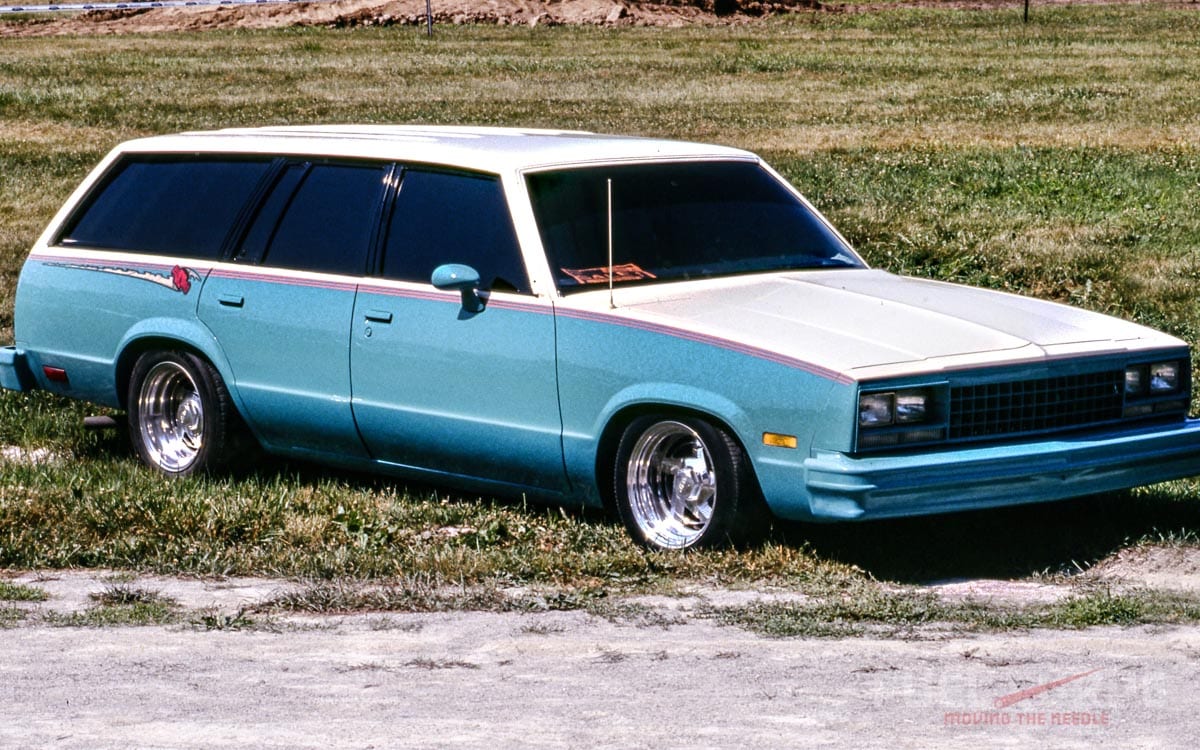 The SM Nationals is a three-day event and we arrived at the ’94 show at 10 a.m. on Friday morning. Already the grounds were overflowing with entrants parked in the best display spaces. The weather was at its usual steamy mid-west best, turning about 90 degrees in the shade with 94 percent humidity.
The SM Nationals is a three-day event and we arrived at the ’94 show at 10 a.m. on Friday morning. Already the grounds were overflowing with entrants parked in the best display spaces. The weather was at its usual steamy mid-west best, turning about 90 degrees in the shade with 94 percent humidity.
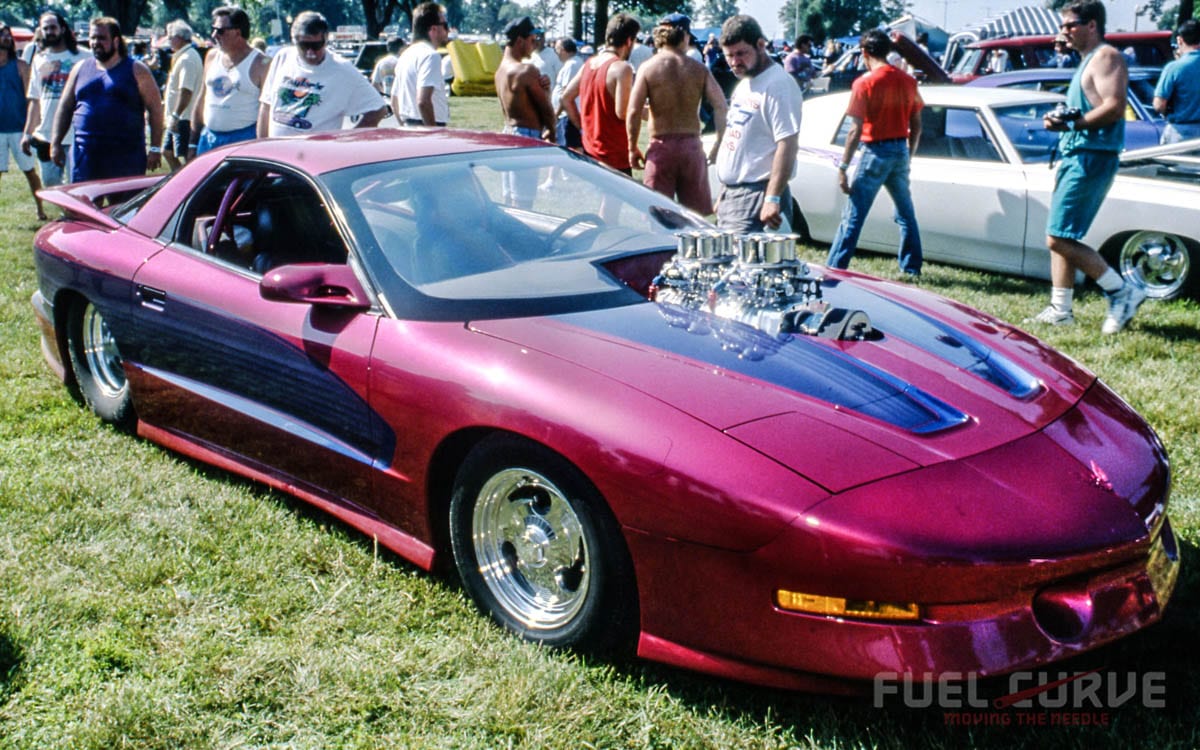
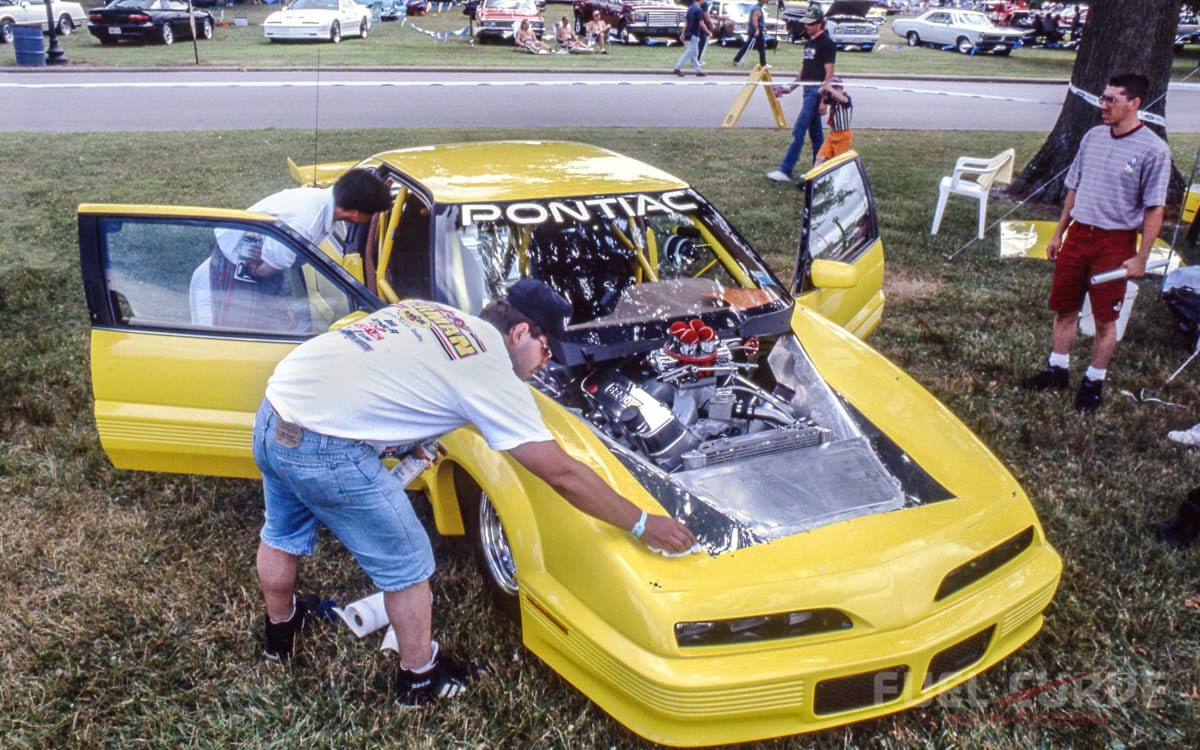 A quick drive around the grounds showed some hot new street machines had emerged from the past winter. The immediate highlights were a new pro street purple Pontiac Trans Am, a yellow Pontiac Grand Am, an orange and beige Chevy II and a white custom Monte Carlo.
A quick drive around the grounds showed some hot new street machines had emerged from the past winter. The immediate highlights were a new pro street purple Pontiac Trans Am, a yellow Pontiac Grand Am, an orange and beige Chevy II and a white custom Monte Carlo.
 One of street machining’s most famous builders in the 1990s, Mark Grimes, arrived with his new Cadillac convertible cruiser. This ’64 convertible featured a tubbed rear end that did not interfere with the rear seat, a stock-blocked 500 cubic inch V8 and slick black paint with a beige top.
One of street machining’s most famous builders in the 1990s, Mark Grimes, arrived with his new Cadillac convertible cruiser. This ’64 convertible featured a tubbed rear end that did not interfere with the rear seat, a stock-blocked 500 cubic inch V8 and slick black paint with a beige top.
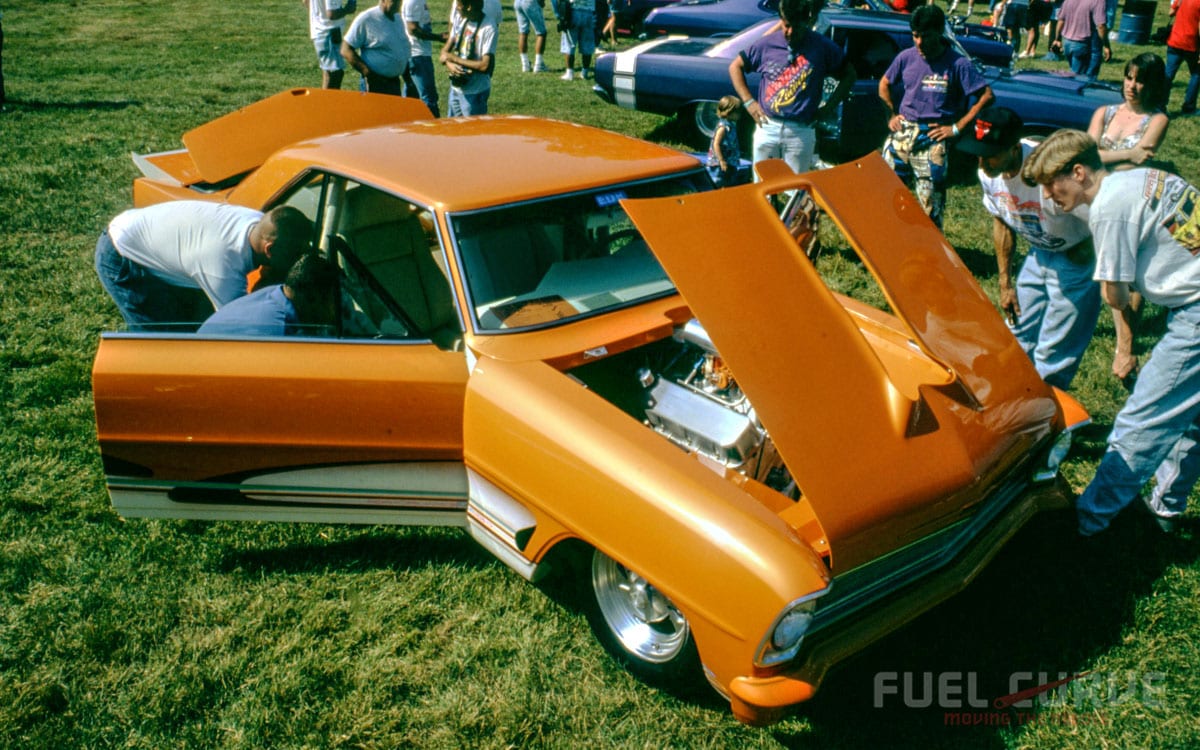
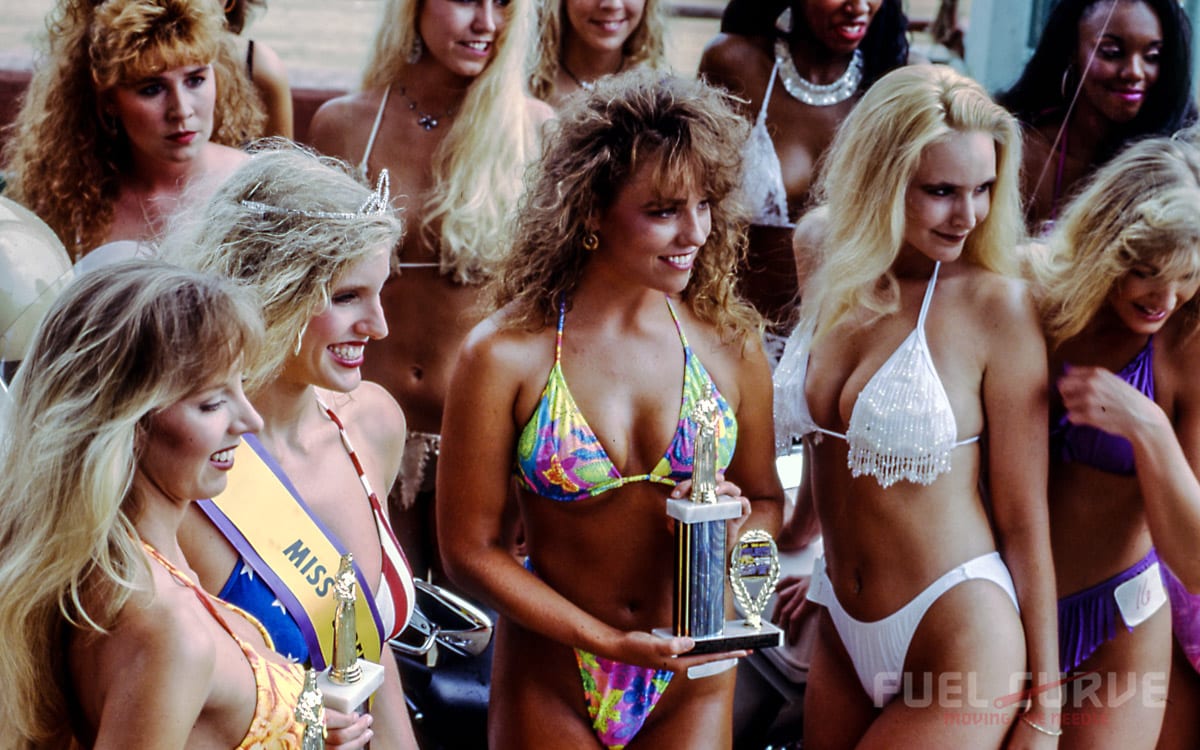
My personal pick of the show went to a stunning Chevy Nova from New Lenox, Illinois. This wonderfully innovative street machine belonged to Dave Verschave and attracted a constant crowd of onlookers, like dogs to a fire hydrant. Its bright Orange Candy paintwork was split with a beige under-panel using colored graphics to blend the colors and shapes together. This was only one of the tricks to this car.
 It also featured an interesting induction system that used a stock manifold and a color detailed four-barrel carburetor, topped with a pair of tubular induction tubes that took cold air from the front wheel wells. These tubes poked through the hood giving the car a custom twin-turbo look.
It also featured an interesting induction system that used a stock manifold and a color detailed four-barrel carburetor, topped with a pair of tubular induction tubes that took cold air from the front wheel wells. These tubes poked through the hood giving the car a custom twin-turbo look.
 Several “rat cars” were among the entrants. Chip Rawson had driven his chopped ’68 Ford woody wagon from Chicago with five passengers. This full-sized four-door wagon had no side windows or roof. As luck would have it, they were caught in a typical mid-western thunderstorm and had found cover under a freeway overpass until the storm passed. When the rains finally ceased they bucketed out five inches of water in the front foot wells. The back was okay; the rust holes let the water run out without a problem.
Several “rat cars” were among the entrants. Chip Rawson had driven his chopped ’68 Ford woody wagon from Chicago with five passengers. This full-sized four-door wagon had no side windows or roof. As luck would have it, they were caught in a typical mid-western thunderstorm and had found cover under a freeway overpass until the storm passed. When the rains finally ceased they bucketed out five inches of water in the front foot wells. The back was okay; the rust holes let the water run out without a problem.
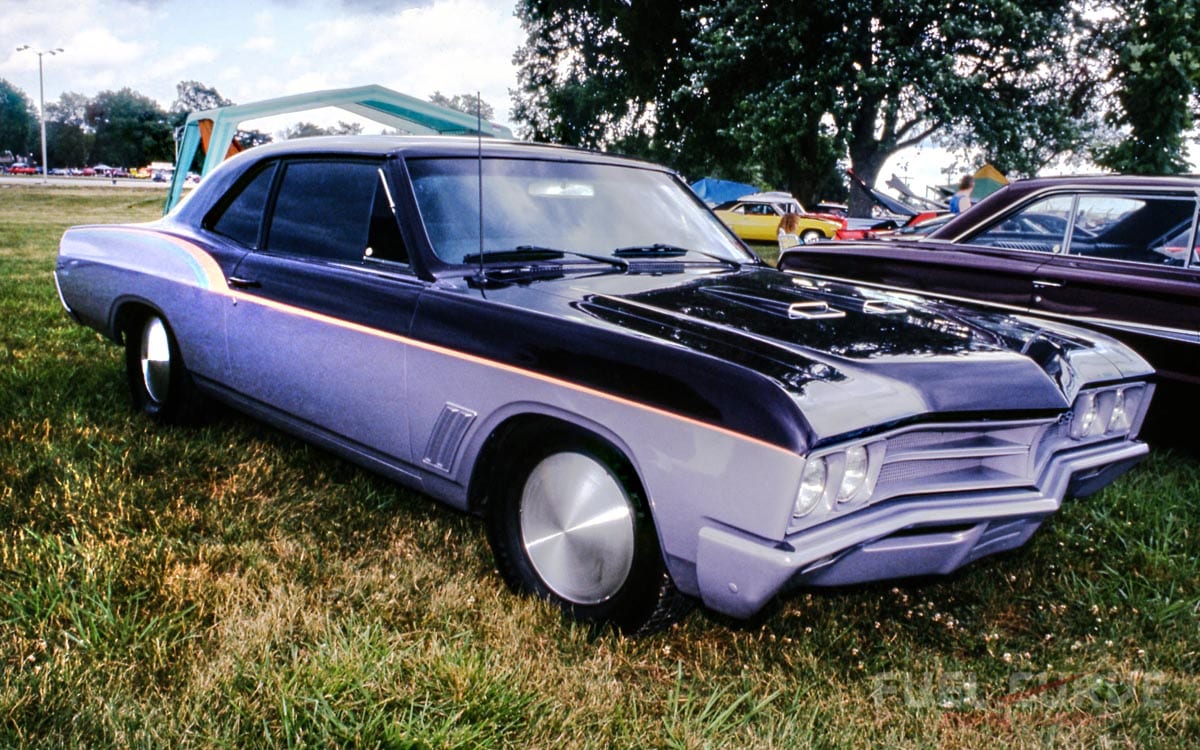 If I had to pick a trend from that year’s show then I would have to say that monotone paint was the big deal. A few years ago, wild graphics had begun to wane, transforming into more subtle blends, forms and colors. Pastels were still the rage, but solid reds, yellows and greens were starting to take over as the new wave.
If I had to pick a trend from that year’s show then I would have to say that monotone paint was the big deal. A few years ago, wild graphics had begun to wane, transforming into more subtle blends, forms and colors. Pastels were still the rage, but solid reds, yellows and greens were starting to take over as the new wave.
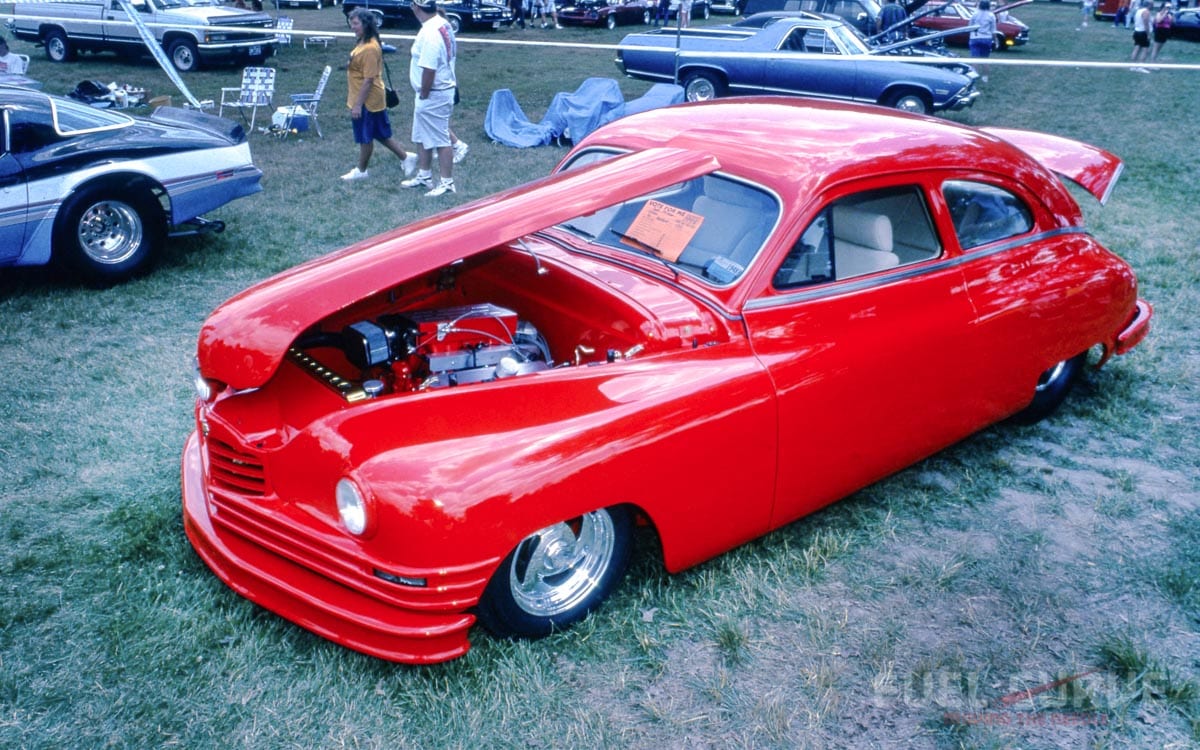 Both Jay Osman’s Corvette-Yellow Pontiac Grand Am and Gail Pitman’s red ’48 Packard sedan featured only monotone paint and billet wheels. New body styles continue to emerge: Late-model Chevrolet Monte Carlo SS’s, Packard’s, late ’50s Plymouth two-doors, early ’50s Buick coupes, and Cadillac’s all made the show in one form or another. It seemed during this time that more folks were taking new roads when it came to building the street machines of the day.
Both Jay Osman’s Corvette-Yellow Pontiac Grand Am and Gail Pitman’s red ’48 Packard sedan featured only monotone paint and billet wheels. New body styles continue to emerge: Late-model Chevrolet Monte Carlo SS’s, Packard’s, late ’50s Plymouth two-doors, early ’50s Buick coupes, and Cadillac’s all made the show in one form or another. It seemed during this time that more folks were taking new roads when it came to building the street machines of the day.
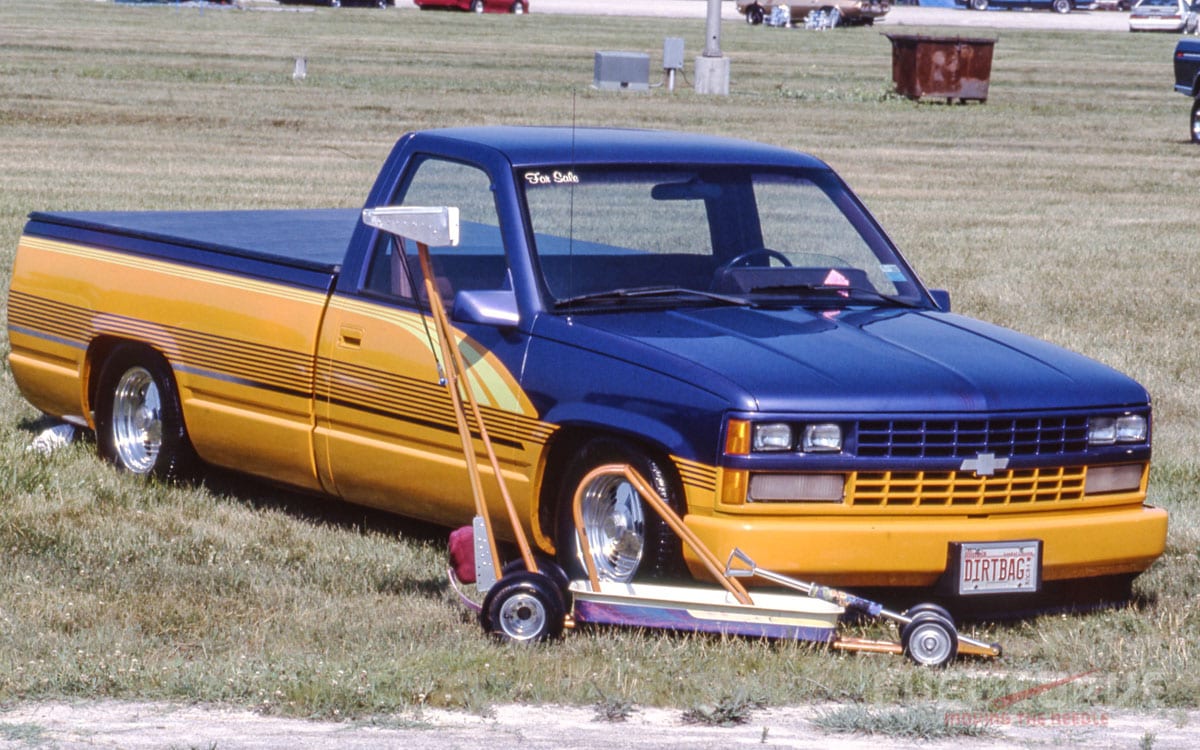
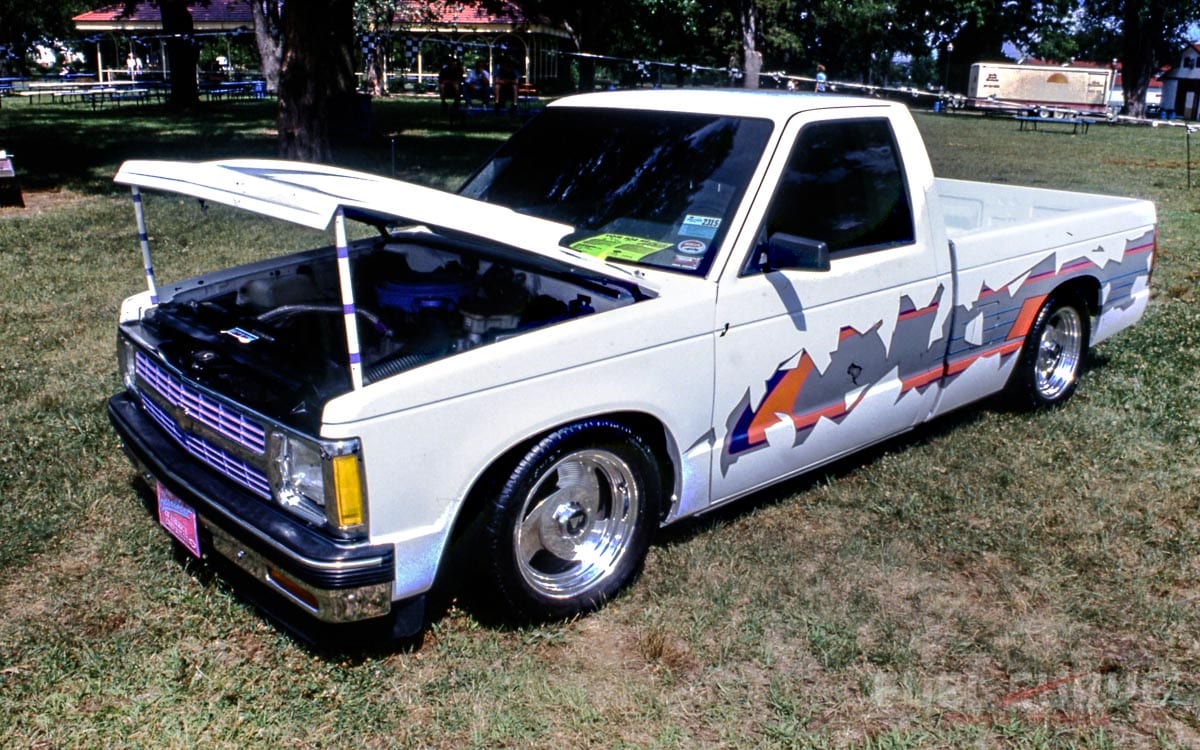 The great wave of Camaro Pro Streeters (long before Pro-Touring) seemed to have passed and a new age of more interesting and varied street machines were emerging.
The great wave of Camaro Pro Streeters (long before Pro-Touring) seemed to have passed and a new age of more interesting and varied street machines were emerging.
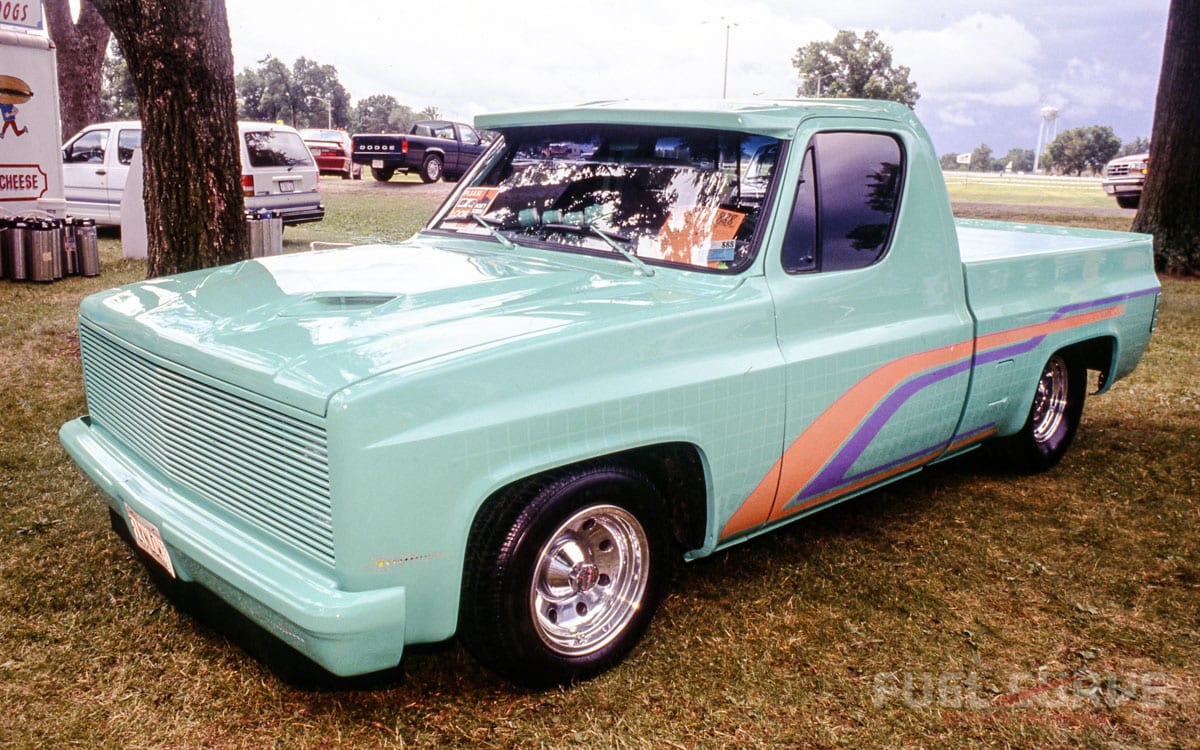 This event was state-of-the-art for the big bodied, big back tire machines. As always it didn’t disappoint. In fact, it’s still going strong in Du Quoin. Click here to get up to speed on the 2018 Street Machine Nationals. We wonder if the same bikini girls will be there?
This event was state-of-the-art for the big bodied, big back tire machines. As always it didn’t disappoint. In fact, it’s still going strong in Du Quoin. Click here to get up to speed on the 2018 Street Machine Nationals. We wonder if the same bikini girls will be there?
